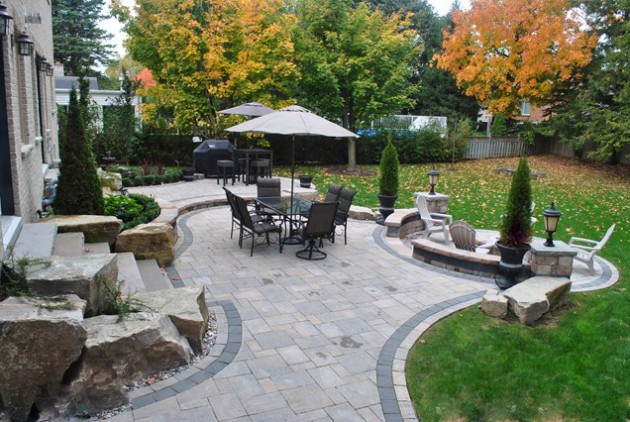Table Of Content

Patterns in art can be mesmerizing, intriguing, and even hypnotic. Let’s dive deeper into the world of patterns in art and discover how repetition and rhythm play a crucial role. Repetition in Art, which we often also call “rhythm in art” are motives that repeat themselves and create a pattern. There is also another conception of pattern that comes from architect Christopher Alexander. Rhythm, like in music, helps build a cadence in your design, engaging your users with all sorts of interesting variations. With some thought, you can maximize the impact of your message by working the right rhythm into your design.
Download the Free Elements and Principles Printable Pack
This versatile resource can be hung in the classroom or used as an art manipulative. An artwork with symmetrical balance is well-balanced and looks even and stable. When one side of an artwork mirrors the other, it has absolute symmetry. When the symmetrical balance is not exact, it is called bilateral symmetry.
Unity vs. Variety
Often, principles like hierarchy, repetition and rhythm create movement. If you apply these principles to a design, the eye will flow through a composition. As a principle of art, contrast refers to the arrangement of opposite elements and effects. For example, light and dark colors, smooth and rough textures, large and small shapes. Contrast can be used to create variety, visual interest, and drama in an artwork.
What are the 5 design principles?
Rather, movement is what an artist uses to guide a viewer's eye in, through, and out of a composition (UTexas). Movement is the path a viewer's eye takes through a composition. In an image, the kinds of lines, shapes, and forms an artist uses can affect this movement.
Shape
They help in distributing elements evenly, enhancing both the functionality and aesthetic appeal of the design. Typography involves the artful selection and arrangement of fonts to enhance readability and artistic expression. It influences how text communicates information and emotion to the viewer. Repetition brings all the elements in a design together, subtly and attractively. On the flip side, if a design feels disjointed or disharmonious, a lack of repetition may very well be the culprit.
Flow And Gestalt
It’s the use of contrast to create salience, or repetition to create harmony that creates a sense of movement and flow. Therefore, this produces a rhythmic visual path for the viewer. In the example of Caravaggio’s oil painting, the dark and light values contrast to create emphasis. However, the shapes of the figure, skull and fabrics mirror each other, producing harmony and unity.
The Intricacies of Repetition in Art
This includes understanding patterns, symmetry, and closure, which guide how viewers interpret visual components as a collective group. After you plan the composition, make sure to draw the outline of the painting before you start so you know how the different elements will fit together. Repetition helps ensure the coherence of a design because you’re applying several instances of the same or a similar element over and over again. It’s important to note repetition doesn’t mean sameness, and using the principle well doesn’t always mean matching elements exactly. Additionally, graduation helps create depth and perspective in artwork. By transitioning from one element to another gradually, the viewer is able to take in the entire piece without abrupt changes that may feel jarring or disorienting.

The human figure is scaled to appear larger than the city skyline. The proportions could indicate depth of perspective or could symbolize the relationship of laborers in building a city. Each of these art fundamentals are closely related and many of them overlap.
References & Where to Learn More
Design for a Green Supply Chain - The 21st Century Supply Chain - Perspectives on Innovative
Design for a Green Supply Chain.
Posted: Fri, 19 Aug 2016 07:00:00 GMT [source]
With radial balance, like in the example of radial balance below, one can imagine the artwork as equal pieces of a pie. Scale in art describes the size of one object in relation to another and also refers to our perception of perspective and proportion. Artworks that look realistic are scaled similarly to real world objects.
Too much variation can lead to disarray and confusion, leaving the viewer unsure about where to focus their attention. Organic patterns are inspired by natural forms, such as leaves, flowers, and waves. They often have a flowing, organic feel that evokes a sense of movement and growth. This type of pattern can be found in Art Nouveau and other styles that celebrate the beauty of nature.
This principle ensures that a design remains engaging and visually stimulating by mixing various shapes, colors, textures, and sizes. Variety can prevent monotony by breaking up uniformity and introducing unexpected, yet harmonious, elements that captivate the viewer's attention. It allows for creative flexibility and can be used to enhance the theme or message of the design. By effectively employing variety, designers can appeal to diverse tastes and preferences, ensuring that the design communicates effectively with a broader audience. Ultimately, variety enriches the visual experience, providing depth and complexity that keeps the viewer interested and engaged. Hierarchy is a pivotal principle of design that organizes elements according to their level of importance.
Because the content is scientific, these elements are a perfect match. In this free bundle of art worksheets, you receive six ready-to-use art worksheets with looking activities designed to work with almost any work of art. The Elements & Principles of Art are the foundation of every artwork, but teaching them can be a bore. Wake your students up and engage them with full color artworks, easy to understand definitions, and thought-provoking higher level thinking questions.
Effective use of balance not only stabilizes a design but also guides the viewer’s eye across the artwork, ensuring each part of the design holds the viewer's attention. Mastery of balance enhances the overall impact and readability of designs. Movement is a dynamic principle of design that guides the viewer's eye through a composition in a deliberate and intentional way.
Don’t be afraid to experiment with different patterns, and try to find the perfect rhythm that suits your artistic style. Now that you have a good grasp of what repetition in art entails, it’s time to explore how artists take advantage of it. In the next section, we’ll dive deeper into the rhythmic aspect of repetition and explore the principle of rhythm. In utilizing these approaches to design, the user experience is put at the forefront of the design ideology. Designers should develop a keen awareness and understanding of the important principals behind design repetition, design, pattern and design rhythm. Unlike repetition and pattern above, rhythm has slightly more complexity to it.
Emphasis is a vital principle of design that focuses attention on the most important elements of a composition. It acts as a point of attraction that pulls the viewer’s eye to key areas, ensuring they are noticed immediately. Designers can create emphasis through contrast, color, size, and placement. For instance, a brightly colored object against a subdued background naturally draws the eye, just as a larger element dominates smaller ones. This principle is crucial in guiding the viewer’s journey through the design, from the most significant aspect to secondary features. Rhythm is a principle of design that suggests movement or action.
It gives a sense of clarity to the size of Big Ben in the distance to the market stalls that are closer. Where emphasis draws the viewer's attention to specific elements in an obvious way, movement is more subtle. You'll learn each visual element from point to texture and how they contribute to creating a visual composition. Transparency adds depth by allowing overlay of elements, creating richness in visuals without overwhelming the composition. Gestalt Principles emphasize the human tendency to perceive unified wholes in complex arrangements.

















